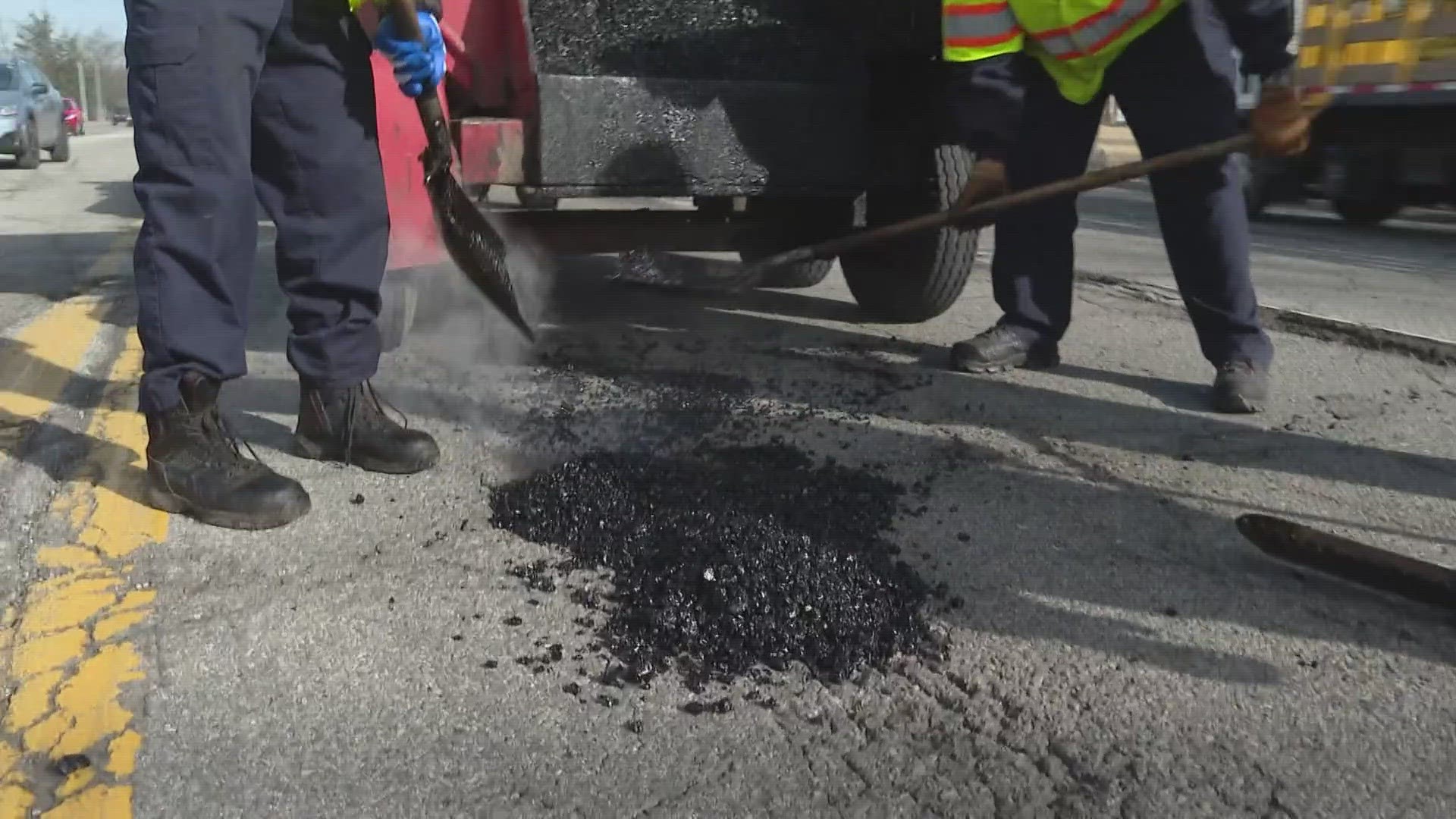Hot Mix Asphalt: The Foundation for Safe and Secure Angled Parking Lots
Hot Mix Asphalt: The Foundation for Safe and Secure Angled Parking Lots
Blog Article
Unlocking the Keys of Warm Mix Asphalt Technology
Exploring the midsts of warm mix asphalt technology reveals a world where meticulous procedures and specific formulations assemble to shape our roadways and facilities. The fusion of fillers, aggregates, and binders isn't just a building job however a critical orchestration of durability and effectiveness. As we peer into the elaborate dance of components, a tapestry of durability and sustainability unfolds. What lies beneath this surface of asphaltic mastery, and what tricks wait to be unveiled in the world of leading innovations?
Importance of Warm Mix Asphalt
Warm Mix Asphalt plays a vital function in modern framework development because of its durability and cost-effectiveness. As one of the most typically used leading material for roadways, highways, and auto parking lots, Hot Mix Asphalt provides a series of advantages that add to its importance in building and construction tasks. One vital advantage is its capacity to withstand hefty web traffic lots and extreme weather, supplying a resilient and reputable surface area for transportation networks. Additionally, Warm Mix Asphalt is cost-efficient in both preliminary construction and long-lasting upkeep, making it a favored choice for many infrastructure jobs.
The durability of Hot Mix Asphalt stems from its structure, which includes accumulations, binder, and filler products that are very carefully selected and mixed to satisfy specific efficiency requirements. On the whole, the relevance of Warm Mix Asphalt in facilities growth can not be understated, as it continues to be a foundation of modern-day building and construction methods.
Parts of Asphalt Mixes
The make-up of asphalt mixes consists of thoroughly chosen accumulations, binder, and filler materials that are critical for accomplishing details performance demands. Aggregates are the primary element of asphalt mixes, providing toughness and stability. The binder, commonly bitumen or asphalt concrete, holds the aggregates with each other and supplies adaptability and longevity to the mix.
The mix and percentage of these components play a substantial role in establishing the high quality and performance of the asphalt mix. Designers very carefully design the mix to meet particular requirements, taking into consideration variables like traffic quantity, climate conditions, and pavement lifespan. Correct option and harmonizing of aggregates, binder, and fillers are necessary for developing durable, lasting asphalt sidewalks.
Combining and Production Techniques

Once the accumulations are chosen, the binder, commonly asphalt concrete, is included to bind the products with each other. The binder's top quality and amount significantly impact the mix's stamina, resistance, and versatility to ecological aspects. In addition, fillers like moisturized lime or Portland cement might be integrated to boost specific qualities of the asphalt mix, such as its workability or wetness resistance.
Throughout manufacturing, the accumulations and binder are heated, generally in between 250-325 ° F(121-163 ° C ), to help with mixing and make certain appropriate covering of the aggregates. The blending procedure needs to be thorough to achieve a homogeneous mix that promotes the preferred performance characteristics of the asphalt. Different techniques, such as batch blending or drum blending, are used to accomplish regular and high-quality asphalt mixes for construction projects.
Variables Impacting Asphalt Efficiency
Factors influencing asphalt efficiency incorporate an array of variables that impact the sturdiness, longevity, and total top quality of asphalt sidewalks. One key variable is the quality of products used in the asphalt hot mix asphalt mix. The type and source of accumulations, the binder quality, and the ingredients all play a considerable role in figuring out the performance of the asphalt pavement. The rank of aggregates is vital as it influences the mix's security, resistance, and workability to rutting and splitting.

Environmental problems additionally affect asphalt performance. Temperature level variants, moisture seepage, and web traffic lots can all affect the structural honesty of the pavement. Style factors to consider, such as sidewalk density and water drainage, are important in guaranteeing the lasting performance of the asphalt sidewalk. By carefully taking into consideration these aspects, contractors and engineers can maximize asphalt performance and boost the service life of sidewalks.
Lasting Practices in Asphalt Modern Technology
:max_bytes(150000):strip_icc()/low-section-of-man-working-758486719-59da6d0a054ad90010617854.jpg)
WMA allows for the manufacturing and placement of asphalt blends at lower temperature levels contrasted to conventional hot-mix asphalt, resulting in lowered power usage and greenhouse gas exhausts. The usage of permeable asphalt blends can help reduce stormwater overflow problems by allowing water to infiltrate through the pavement and into the ground, advertising natural water purification and recharge procedures.
Final Thought
Finally, hot mix asphalt technology plays an important role in contemporary facilities growth because of its toughness and cost-effectiveness. By carefully stabilizing parts, employing appropriate mixing methods, and taking into consideration numerous factors, engineers can produce top notch asphalt mixes that endure rush hour loads and extreme climate condition. Accepting sustainable techniques, such as utilizing recycled products and warm-mix technologies, further enhances the ecological friendliness of asphalt modern technology.
Blending and production methods in warm mix asphalt technology include the accurate combination and handling of aggregates, binder, and fillers to create a high-performance and resilient asphalt mix.Factors influencing asphalt efficiency incorporate a variety of variables that influence the toughness, longevity, and overall top quality of asphalt pavements. Lasting techniques in asphalt technology encompass different initiatives intended at lowering the environmental impact of asphalt manufacturing and paving procedures. By integrating reclaimed asphalt pavement (RAP) and recycled asphalt roof shingles (RAS) into brand-new asphalt blends, the industry can considerably reduce the usage of raw products and power, while additionally decreasing landfill waste.
WMA allows for the production and placement of asphalt mixes at reduced temperature levels compared to standard hot-mix asphalt, resulting in minimized energy usage and greenhouse gas discharges.
Report this page